
To Kill a Mockingbird is a modern reinterpretation of the old fable The Emperor Has No Clothes. We are given a glimpse of modern American society through the eyes of a seven-year-old girl called Scout. Even she can see the injustice and yet the adults fail to see the criminal miscarriage of justice and toxic levels of racial prejudice that lie at the heart of the novel.
The novel is a classic bildungsroman where Scout, the central character and narrator, is taken from a state of innocence and brought to a state of enlightenment as a result of a series of misadventures that are recounted in the novel. A classic bildungsroman forces the young character at its heart to grow up and face harsh adult realities long before he or she should normally have to cope with life’s harsh lessons.
To Kill a Mockingbird by Harper Lee is, therefore, a novel that deceives the reader with its apparent simplicity. Beneath the surface, however, there exist a number of complex and very important themes and motifs. Rather than its being simply a novel that explores and exploits the topic of racial prejudice in a small town in the Deep South, it makes Maycomb, Alabama, a microcosm of American society in the 1930’s.
I want to focus for a little while on the setting of both of Harper Lee’s novels, To Kill a Mockingbird and Go Set a Watchman. It is clear to me that the real-life Monroeville, Alabama of her youth becomes the fictional Maycomb, Alabama of her novels. She tells us that one went to Maycomb, ‘to have his teeth pulled, his wagon fixed, his heart listened to, his money deposited, his soul saved, his mules vetted’. She describes it as an isolated place, in effect it is an Everyplace – the town, ‘had remained the same for a hundred years, an island in a patchwork sea of cotton fields and timberland’. It is, in effect, a remote backwater bypassed by progress, the perfect playground of her youth, and the perfect cauldron for change.
In Go Set a Watchman she says that Maycomb County is, ‘a wilderness dotted with tiny settlements’, it is, ‘so cut off from the rest of the nation that some of its citizens, unaware of the South’s political predilection over the past ninety years, still voted Republican.’ It is so remote, ‘no trains went there’. In fact Maycomb Junction, ‘a courtesy title’, was located in Abbott County twenty miles away! However, she tells us that the ‘bus service was erratic and seemed to go nowhere, but the Federal Government had forced a highway or two through the swamps, thus giving the citizens an opportunity for free egress.’ However, Lee tells us that few took advantage of this opportunity! Then in one of those Harper Lee epiphany moments, one of those lightning bolts she releases now and then, she perceptively describes her hometown as a place where, ‘If you did not want much, there was plenty.’
In To Kill a Mockingbird she continues in the same rich vein. Maycomb is, ‘a tired old town’. People moved slowly, ‘they ambled across the square, shuffled in and out of the stores around it, took their time about everything’. She tells us that, ‘There was no hurry, for there was nowhere to go, nothing to buy and no money to buy it with, nothing to see outside the boundaries of Maycomb County’.
To Kill a Mockingbird is dominated by two very contrasting characters and our first task is to explore in some detail the part played by Scout and Atticus in conveying the difficult and often divisive subject matter to the reader.
SCOUT
Scout is the narrator of the story, and the impressions we get of all the other characters must, therefore, be filtered through her point of view. All the activities and opinions in the novel are expressed through the mind of this innocent child who does not always understand the significance of the events she is narrating and, as a result, much of the comedy in the book comes from her misunderstandings. Typical of the central character in a bildungsroman novel Scout changes and matures and gains greater insight as the novel progresses and she learns – as do her readers, young and old – a great deal from her experiences.
She is a very open-minded and clever girl who accepts the people around her at face value. For example, she is able to go to Calpurnia’s church without making any social distinctions. Furthermore, she accepts people like the Cunninghams and the Ewells as equal, but during the course of the novel, she learns to make a distinction between these two groups of people. Ironically, the distinctions that she has to learn involve the differences between different types of whites such as the Cunninghams and the Ewells, and do not involve any judgements about the Negro race. Eventually, however, she learns not only about the complex white social relationships, but she also learns about the prejudices harboured by the white man for the Negro.
Throughout the novel, we watch Scout as a character change from a belligerent young girl who is always ready to fight her corner to a person with a certain degree of understanding for those around her. For example, at the beginning of the novel she is willing to play any type of prank on Boo Radley, but by novel’s end she walks him back to his house and she realises that things look the same from Boo Radley’s porch as they do from hers. She also has the insight to see that Sheriff Heck Tate is right in not charging Boo with the murder of Bob Ewell. In her view, it would be like killing a mockingbird and at that stage in the novel, one dead mockingbird (Tom Robinson) is enough. This is one of the many valuable lessons learned by Scout in the course of the novel.
Scout is a very clever girl and she can read and write before she goes to school. She tends to react emotionally to events, ready to fight first and think later. As the novel opens she accepts people as they appear on the surface, but later she learns that society is complex and that people can be very prejudiced. Her own upbringing and personality give her an appreciation of justice, but Tom Robinson’s trial shows her that others are not so fair-minded. The self-control she has to exercise at this time helps her to mature. She feels that she would be letting her father down if she were to lose her temper.
She is naturally warm and friendly. She wants to visit Calpurnia in her home, she rushes in to talk to Mr. Cunningham outside the jail and tries to be polite and put him at his ease even though he is part of a mob. She can be very sensitive to other people’s feelings. She feels guilty about the games the children played on Boo Radley and she takes great care to treat Boo with courtesy and dignity when they finally meet. Because she is a girl, Scout is expected to behave in a way that she finds constricting. She is more comfortable in her overalls than in a pretty dress, but as she matures she learns that it can take courage to be a real lady. This is brought home to her at Aunt Alexandra’s tea party on the day of Tom Robinson’s death.
At novel’s end, we see just how sensitive to other people Scout has become. She realises that Boo Radley is a shy man and that to draw any more unwelcome attention to him would be like killing a mockingbird. She has also learned how to see things from another person’s point of view.
ATTICUS
Atticus Finch represents the rational man in a world of highly emotional people. Atticus is a stable and mature figure who is able to cope with the unreasonable and highly emotional element of the town. He can handle the prejudiced white people and still deal justly with the underprivileged Negro population. He is one of the few people in Maycomb who understands the individual worth of a person regardless of the color of their skin. He is able to defend Tom Robinson solely on the basis of justice and does not allow the colour of Tom’s skin to prejudice him against Tom’s case.
It is necessary to have a man with a high and ideal view of justice defending Tom Robinson because even Atticus knows that the case is hopelessly lost before it begins. He is wise enough to know that the prejudices of the Deep South will never allow justice to be done, but at the same time, he is determined that the truth will be told so that those who convict Tom will be aware that they are convicting an innocent man.
Atticus is also Harper Lee’s spokesman of the moral philosophy of the novel. He teaches his children that they must learn to be compassionate and understanding of the problems and conditions of life faced by other people. He frequently advises Scout that she must be able to step into the shoes of others such as the Ewells, Boo Radley, and the Cunninghams. Consequently, he will not allow the children to torment Boo Radley and wants Scout to try to see things from Boo’s point of view.
Atticus’ relationship with his children is very important in understanding his character. He has an outstanding rapport with his children because he treats them as mature adults and tries to explain to them how to meet the problems that are presented to them in an adult world. All of Atticus’s relatives feel that he is bringing up his children incorrectly, and they challenge his methods of handling the children. However, the incident with Uncle Jack illustrates that his methods are for the best. Uncle Jack punishes Scout without listening to her side of the story, whereas Atticus always gives her the opportunity to explain her point of view. As a parent, therefore, he is easy-going but wise, not worrying about petty things, but instead teaching his children important values.
He teaches them to be sensitive to other people like Mrs. Dubose and Boo Radley and above all to be able to step into other people’s shoes and see things from their point of view. He teaches by example and his children learn kindness, tolerance, courage, self-control, and forgiveness from observing their father. He listens to them, has patience with them and always tells them the truth. They respond by loving and respecting him; they worry about him when he is tired or troubled and try their best not to cause him grief.
Therefore, Atticus is the voice of reason and justice in the novel whether he is dealing with the grim ingrained prejudices in Maycomb or whether he is trying to handle a minor problem of discipline with his own children. He is portrayed by Harper Lee as a responsible citizen, a loving parent, and a true Christian. He is a just man who deals fairly and sensitively with all people and he is completely lacking in prejudice. His physical courage is seen when he shoots the rabid dog and also when he faces down the mob outside the jail, while his moral courage becomes obvious in his sincere defense of Tom Robinson, even when he knows he is unlikely to win the case.
He gives us his own powerful definition of courage: ‘It’s when you know you’re licked before you begin but you begin anyway and you see it through no matter what’. He hopes that although they will not admit it, the people of Maycomb will realise that they are convicting an innocent man. He is modest and never boasts about his talents and even his own children are unaware that he is an exceptional marksman until he is called upon by Sheriff Tate to shoot the rabid dog. Scout also realises his bravery when she sees how he deals with Mrs. Dubose: ‘It was times like these when I thought my father, who hated guns and had never been to any wars, was the bravest man who ever lived’.
‘I do my best to love everybody’, Atticus tells Scout and Miss Maudie recognizes that he is a real Christian. She says of him: ‘We’re so rarely called on to be Christians, but when we are, we’ve got men like Atticus to go for us’. He treats all people with respect and as equals: Mrs. Dubose at her most contrary, young Walter Cunningham when he is a guest in the house, Mayella Ewell on the witness stand. His kindness and consideration never fail and even in an emergency he is thoughtful; he remembers to rescue Miss Maudie’s favourite chair from the fire that engulfs her home. His character is such that he may, with some justification, be considered the hero of the novel.
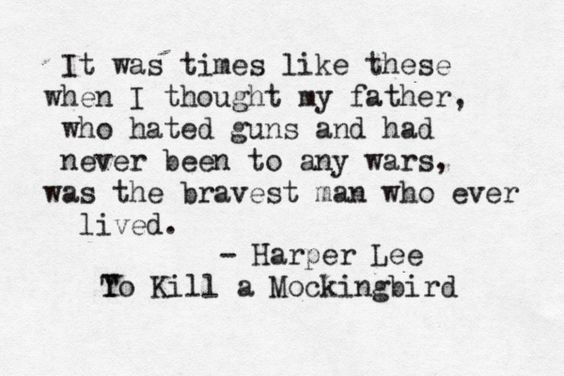
***********
MAJOR THEMES AND MOTIFS IN THE NOVEL
Several themes and motifs run through the novel and serve to underscore the basic reality of prejudice in both Maycomb and in the rest of America during the 1930’s.
THE MOCKINGBIRD MOTIF
(A motif is a recurring idea or thought that acts as a unifying device in a novel and sometimes develops as a commentary on characterisation or on the action of the novel).
The mockingbird motif, in this case, gives the novel its name. It represents innocence in the novel and both Miss Maudie and Atticus feel that it would be a great sin to kill a mockingbird because this bird only sings a beautiful song and does not harm anyone. When Atticus gives the children air rifles for their Christmas presents, he reminds them again that it would be dreadful to kill such an innocent bird:
“Shoot all the bluejays you want, if you can hit ’em, but remember it’s a sin to kill a mockingbird.’
That was the only time I ever heard Atticus say it was a sin to do something, and I asked Miss Maudie about it.
‘Your father’s right,’ she said.
This motif is also the device by which the two plot elements are unified in the novel by Harper Lee. The first part of the novel is concerned with the Boo Radley mystery and the second part is concerned with the Tom Robinson trial. Both of these characters can be viewed as being mockingbirds: both are harmless members of society and both are innocent people, yet in some way, both are persecuted by society.
Scout herself comes to realise that Boo Radley is a mockingbird figure because when he rescued her at the end of the novel, he was forced to kill Bob Ewell. But to bring such a retiring and bashful man to trial would be just like killing a mockingbird. It is also evident that Tom Robinson is a mockingbird figure because he is destroyed by his willingness to help Mayella Ewell. His efforts to help her got him into trouble and finally cost him his life.
Ultimately, to kill a mockingbird is equated with performing a deliberately evil and mean act. Atticus, at one point in the novel, thinks that there is nothing worse than a white man who will take advantage of a Negro. Yet the entire town is partly responsible for Tom Robinson’s death, which must be viewed as a senseless act of injustice.
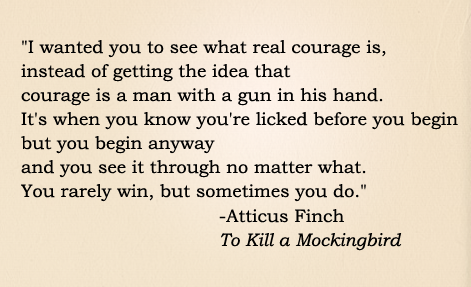
THE GUN MOTIF
In a country which now sees a mass shooting on average every 60 days the time for gun control in the USA is long overdue Many of the most notorious of these mass shootings have taken place in schools: we remember with sadness the massacre at Columbine High School in 1999 where 24 were killed; Virginia Tech in 2007 where 33 were killed; Sandy Hook Elementary School in 2012 where 28 were killed; and Stoneman Douglas High School in 2018 where 17 were shot and killed. Recently, churches and synagogues have been easy targets for depraved gunmen with their own myopic agendas and easy access to automatic weapons. Harper Lee, writing in what many would consider less dangerous times in the late Fifties and early Sixties thought fit to raise the issue of guns in To Kill a Mockingbird. In the novel, guns represent false strength. According to Atticus, guns do not prove manhood or bravery, rather they come from a man’s ability to persevere and fight using his wits, his heart, and his character. Early in the novel, we learn that Atticus does not approve of guns. He believes that guns do not make men brave and that the children’s fascination with guns is unfounded.

EDUCATION
In this novel, the process of education occurs both inside and outside the classroom. It is not limited only to the education of Scout, for it affects both adults and other children in the story. Harper Lee’s thesis is that it is education that separates the whites from the blacks, the Cunninghams from the Ewells, and it is education which further separates the Finches from the Cunninghams. Education – and the lack of education – are responsible for creating and re-enforcing a sort of caste system in Maycomb, a caste system which decrees that black children don’t sit in the same classroom and receive the same education as white children do.
Early in the novel, and several times later in the story, the reader is taken into the classroom with Scout to view the school system in operation. As Jem tells Scout, the new way of teaching which Miss Caroline is practicing is one which the entire school will use eventually, and is one in which ‘ you don’t hafta learn that much out of books that way’.
And while Miss Caroline is officially the teacher, there is great irony created when we realise that it is she who must actually learn the most during her first few days at school. The learning-by-doing approach advocated by Miss Caroline has been practiced naturally by Scout and Jem since they were very young and they learned to read by simply observing their father and by reading along with him in the evenings. Miss Caroline ironically criticises both Scout and her father, Atticus, as having done it all wrong! Yet Atticus’ method is the very same one that she presumes to espouse!
For the children, then, learning has come not from formal teachers such as Miss Caroline and Miss Gates, but through the common-sense wisdom of Atticus, Calpurnia and Aunt Alexandra. These ‘teachers’ have presented the children with real experiences that over the course of the novel, shapes their beliefs, their opinions,, and actions. Outside of the classroom, the children enact the very methods which the formal teachers attempt to impart.
Harper Lee does not appear to be criticising education so much as she is attacking those teachers who possess erroneous, rigid beliefs about human nature. Miss Caroline presumes to teach others, yet she herself knows next-to-nothing about getting along with other people. Rather than attempting to blend her teaching and her classroom philosophy to suit the young people of Maycomb, she tries to change the students to fit her perceptions. She fails miserably in her encounters with Burris Ewell and Walter Cunningham and even though Scout does feel some pity for her she won’t offer her any comfort because there has been no friendliness offered in exchange.
Miss Gates teaches the children little about life. Theoretically, she espouses a system of democracy yet she worries about the Negroes who seem to be trying to ‘get above themselves’, and in particular, she fears that they might start marrying whites! She is keen to point out examples of racial prejudice in Hitler’s Germany yet fails to point out the obvious prejudice closer to home in Maycomb itself.
In essence, it is Atticus who personifies the attainment of true education, in contrast to the formal schooling offered to the children. It is left to Scout to make the final assessment of formal education. At the end of the novel, now in third grade, Scout says, ‘… I thought Jem and I would get grown but there wasn’t much else left for us to learn, except possibly algebra.’ !!!

STANDING IN ANOTHER PERSON’S SHOES – A NEW PERSPECTIVE
When Scout comes home after her first day at school she is determined never to return there, because it has been a disaster. Atticus explains to her that she will get along much better in life if she learns to understand another person and to do this she must consider things from that person’s point of view. He advises her to ‘climb into his skin and walk around in it’.
When Scout doesn’t understand Jem, Atticus encourages her to try to understand how he might be feeling. Usually, Scout finds this advice helpful, and her attempts to gain insight into other people’s perspectives on life and the world broaden her moral education and understanding.
When Mrs. Dubose, the mean old woman who lives down the street from the Finch family yells insults at Jem and Scout on her way to town, Jem reacts by returning and cutting up all the flowers in her front yard. His punishment is to read to Mrs. Dubose for a specific time period every day. He complains to Atticus that she is an awful woman, but Atticus tells Jem and Scout to try to understand Mrs. Dubose’s point of view. She is an old woman, very set in her ways, and she is entirely alone in the world. Jem and Scout agree to visit her. After her death, Atticus reveals that by reading to her each day, the children were helping her break her morphine addiction. Atticus explains that she was fighting to regain control over her life even as she knew that she was dying. Because of this, Atticus says that she is the bravest person he has ever known. He explains this to the children to try to make them understand the terrible pain she was experiencing, and how their presence helped her to defeat her addiction. Although she may have said some horrible things to them, Atticus encourages Jem and Scout to try to see the world from her perspective and to realise how brave and strong she was.
It is Atticus’s own ability to do this which makes him such a fair-minded, honourable man. Even when he disagrees with them he can sympathise with other people’s feelings. He knows how people like the Cunninghams feel, he understands Mrs. Dubose and her fight against morphine addiction and why Mayella Ewell acts as she does in accusing Tom Robinson of rape. It is this sympathy for and empathy with other people that he tries to pass on to his children. We know that he has been successful in doing so when we see Jem’s sensitive nature and also at the end of the novel when Scout stays for a moment on the Radley porch and stands as it were in Boo Radley’s shoes, we know that she too has absorbed Atticus’s and Harper Lee’s message.

‘THE HELL PEOPLE GIVE EACH OTHER’
When Mr. Dolphus Raymond talks to Scout and Dill outside the courthouse during Tom Robinson’s trial, he understands why Dill is upset. He talks about, ‘the simple hell people give other people – without even thinking. Cry about the hell white people give coloured folks, without even stopping to think that they’re people too’. By this, he means the cruelty people inflict on each other in their racial, social and family relations.
Racial prejudice is very clearly depicted in the novel. Black people are discriminated against in Maycomb. They are not treated as equals by the white community and even in a law court, they cannot expect to receive justice. The trial of Tom Robinson illustrates this very clearly. The teacher, Miss Gates, who is very much aware of racial prejudice in other countries, like Germany, is prejudiced herself towards black people. Scout hears her outside the court during the Tom Robinson trial saying that she thought it was, ‘time somebody taught them a lesson, they thought they were getting way above themselves, an’ the next thing they think they can do is marry us’. Scout can see straight away that this statement is in clear conflict with her teaching (about Germany) in her classroom.
There are also many examples of social snobbery among Maycomb people. Aunt Alexandra is very conscious of family backgrounds and she will not allow Scout to invite young Walter Cunningham to the house because she does not consider him to be from the proper social background. It is also snobbery that is responsible for the Radleys’ refusal to allow their son, Arthur, to be punished in the same way as the other boys when he gets into trouble with the law as a teenager.
The novel shows us that even families can be extremely cruel places to survive. The Radley family treat Arthur with great cruelty by keeping him locked up for fifteen years because of a minor misdemeanour he committed as a boy. Dill’s mother and stepfather neglect him and leave him to the care of his Aunt Rachel who is a secret drinker. The Ewell children live in squalid circumstances while their father spends his welfare money on drink. The Ewell children are not sent to school and Mayella, the eldest girl who tries to look after the younger children is abused by her father. This is probably the most poignant moment in the trial when we are given a horrific image of what goes on inside the Ewell family compound. This is just one of the masterful storytelling devices used by Harper Lee. In these days when stories of sexual abuse are everywhere in our media, how salutary to come across the true barbarity of it here, revealed in one tiny phrase: ‘she never kissed a grown man before an’s she might as well kiss a nigger. She says what her papa do to her don’t count.’
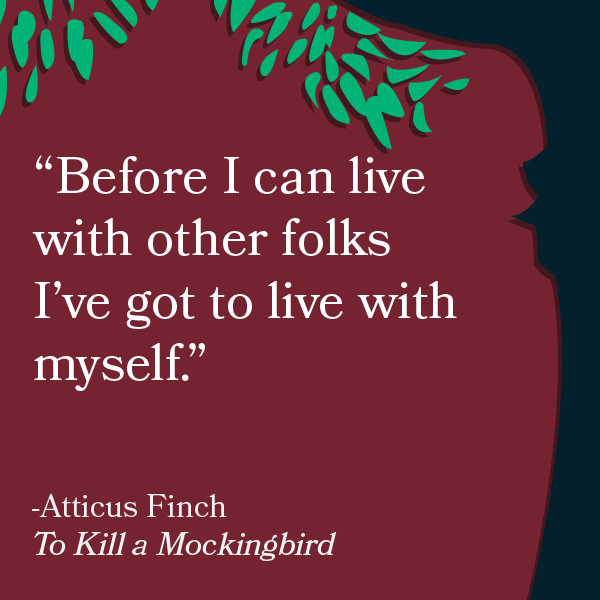
GROWING UP
As mentioned already, the novel To Kill a Mockingbird belongs to a genre of novel called Bildungsroman, or a ‘novel of maturation’. In such a novel the central character is usually a very young person, and they are usually taken from a state of childhood innocence and brought to a state of experience and enlightenment as a result of a series of misadventures which are recounted in the novel. He or she should, thus, be ready for adulthood. In this novel, which covers a period of three years, Scout develops from a state of childish innocence to a state of maturity.
Early in the novel, she learns the meaning of real courage as she witnesses Mrs. Dubose’s struggle to overcome her addiction to morphine. She also learns to appreciate her father’s physical courage and skill as he saves the town from a mad dog by killing it with one shot. Up to then she and Jem had looked on Atticus as a feeble, ageing man.
More important to her development is the moral courage her father displays in his fight for justice for Tom Robinson when the black man is accused of raping a white woman. Most people are ready to condemn Tom because of his colour and race, but Atticus defies the majority opinion and makes every effort to see that justice is administered. When he fails and Tom is wrongly convicted Scout has to learn that the law is not always fairly applied and that there is a great deal of prejudice in the society in which she lives. Even her teacher, Miss Gates, who can find fault with people in other countries for being racially prejudiced, shows by her remarks outside the courthouse that she does not recognise prejudice in her own town. As she matures Scout learns to control her emotions and to act more sensitively to other people. At the beginning of the story, she is afraid of Boo Radley and she believes all sorts of nonsensical tales about him. She takes part in schemes to make him ‘come out’ of his house and plays games that make fun of him. Later she comes to see him as a real person, who not only gives her presents but who also saves both her life and Jem’s. She even learns to stand in Boo Radley’s shoes and see the world from his point of view.
By novel’s end, she realises that it is like shooting a mockingbird to harm a person who is harmless, that it is possible to understand another person if you see things from his point of view and that ‘nothin’s real scary except in books’.
******
I mentioned at the very beginning that To Kill a Mockingbird could be considered as a modern re-imagining of the old fable The Emperor Has No Clothes. The reason I said this is that the novel masterfully exposes the grim reality of what first appears as a sleepy old southern town. By novel’s end Harper Lee, mainly through her precocious young narrator, reveals the true nature of the place: she presents us with a classic tragedy of injustice, prejudice and man’s inhumanity to man. But it is told to us matter-of-factly by a mere child, ignorant of what rape is, and in whom the ingrained teaching of an upbringing in Alabama in the 1930s has left a belief that black people are only slightly superior to farm animals. Our greatest fear, as readers, is that Scout and Jem will feel quite differently about these subjects when they eventually grow up!!!





















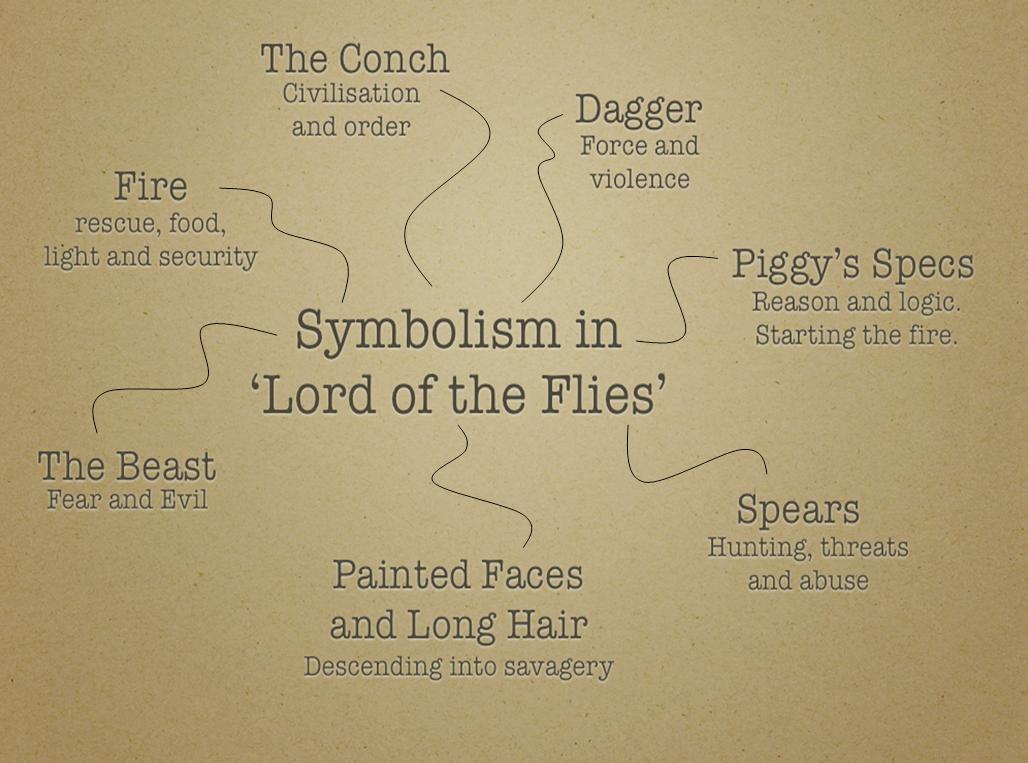




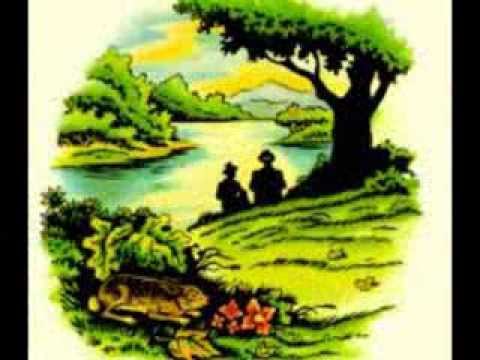
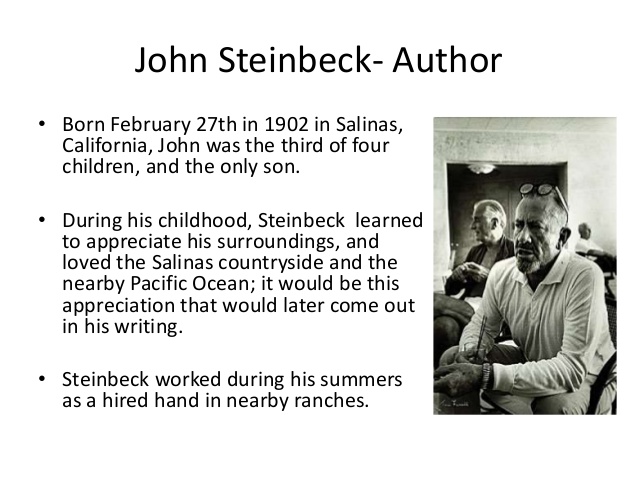
You must be logged in to post a comment.